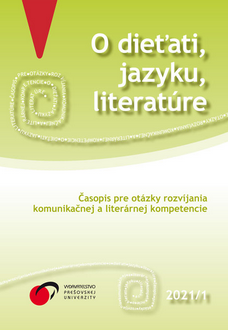Lexical features of Croatian Language textbooks for the first grade of primary school
Lexical features of Croatian Language textbooks for the first grade of primary school
Author(s): Katarina Aladrović Slovaček, Lidija Cvikić, Maša Rimac JurinovićSubject(s): Lexis, Language acquisition, South Slavic Languages, School education, Pedagogy
Published by: Vydavateľstvo Prešovskej univerzity v Prešove
Keywords: textbooks; Croatian language; lexical diversity; lexical density; vocabulary;
Summary/Abstract: The reform processes in the education system of the Republic of Croatia began in 2005, and in 2019 new, competence-oriented, modern curricula of all school subjects were introduced, accompanied by new paradigms of teaching and assessment. These changes are reflected in the textbooks, one of the basic sources of pupils’ knowledge. The textbooks must be harmonized with the curriculum in their content and pedagogical approach, and linguistically suitable for pupils. Textbook language appropriateness is crucial for the lower-level primary school pupils (age 6-10) since their language development is not yet complete. Serving as a source of language input for pupils, textbooks will affect pupils’ language development, especially lexical. This paper explores lexical features of textbooks for three 1st grade subjects of primary school: the Croatian language (a mother tongue), Mathematics, and Science and Society. Using the corpus linguistic tool Sketch Engine, an analysis of the textbooks’ vocabulary was conducted. The analysis showed that the textbook vocabularies differ quantitatively (by the number of words they contain, the length of texts, and the mean sentence length), as well as qualitatively (by the representation and frequency of individual words).
Journal: O dieťati, jazyku, literatúre
- Issue Year: IX/2021
- Issue No: 1
- Page Range: 60-73
- Page Count: 14
- Language: English

